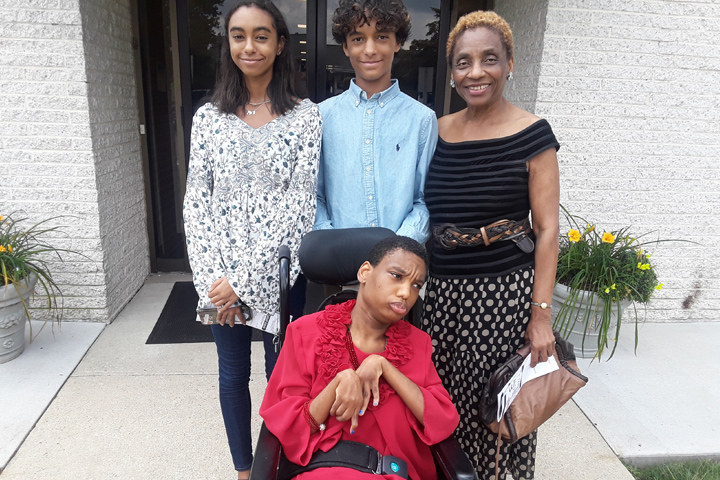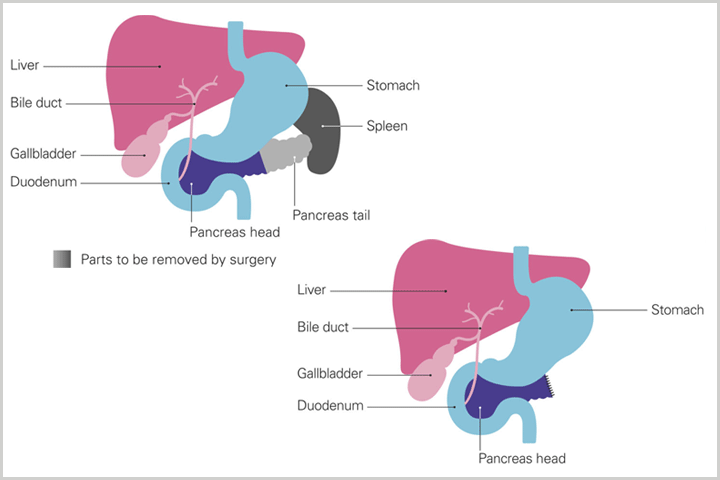Treatment Options
After you are diagnosed, your oncologist will discuss treatments. Learn more about the different types of chemotherapy, surgery, and radiation used to treat pancreatic cancer.

Chemotherapy
Most pancreatic cancer patients receive some type of chemotherapy, no matter what the stage of disease, to stop or slow the cancer from growing. Chemotherapy can cause significant side effects, and the type given depends on many factors—stage of disease, age and overall health of the patient, and the goal of the chemotherapy.
Neoadjuvant chemotherapy—before planned surgical removal of the tumor—is given to shrink the tumor and kill any circulating cancer cells. It is also given to patients whose tumors could be removed if they were made smaller. Surgical patients very often receive chemotherapy after surgery, called adjuvant chemotherapy, to decrease the chances of a recurrence of the cancer.
Learn more about the different types of chemotherapy in “Chemotherapy: A Key Player in the Battle Against Pancreatic Cancer.”
Radiation
Radiation treatments use high-energy beams to shrink tumors in the pancreas and other organs. There are a number of types of radiation therapies, each with somewhat different effects. Radiation can be given as part of treatment before surgery (neoadjuvant) to shrink the tumor and make surgery feasible, or to slow the growth of the tumor. Radiation can also be given after surgery (adjuvant), to kill any microscopic cancer cells that were left behind at the surgical site. Another use for radiation is to relieve symptoms by shrinking a tumor that is causing pain, bleeding, or difficulty swallowing, depending on tumor location.
Different types of radiation treatments are used in different situations. Learn more by reading “Radiation Therapy to Fight Pancreatic Cancer.”
Surgery
Only about 20 percent of pancreatic cancer patients are able to have surgery to remove their tumors. To qualify for surgery, the tumor must be confined to the pancreas and must not involve other organs or blood vessels in the area, such as important arteries or veins. Two main types of surgery are performed, based on the location of the tumor.
For tumors in the head and neck of the pancreas, the Whipple procedure is performed. This long and complex surgery results in significant rearrangement of the digestive system. A distal pancreatectomy is for tumors located in the body or tail of the pancreas. This surgery is not as long or complex. Sometimes total removal of the pancreas (total pancreatectomy) is necessary, with the same rearrangement of the digestive system as in the Whipple.
Certain procedures can also be used to treat symptoms, for example placement of a stent to open a blocked bile duct, or a nerve block for pain.
Clinical Trials
Participating in a clinical trial is also an important option for treatment. To learn more about how clinical trials work and how to find trials, visit our Clinical Trials pages.






